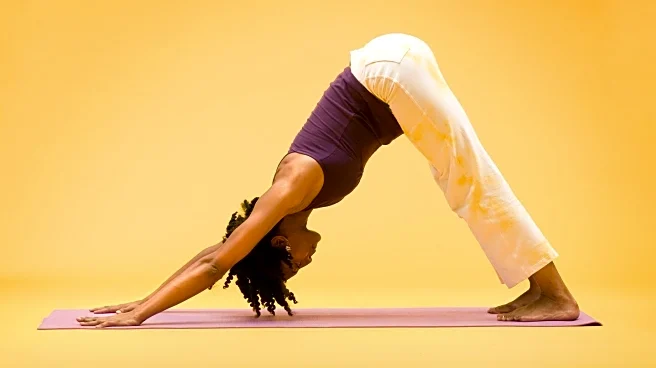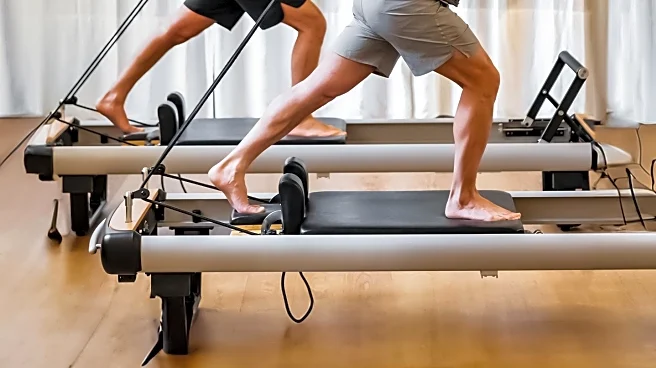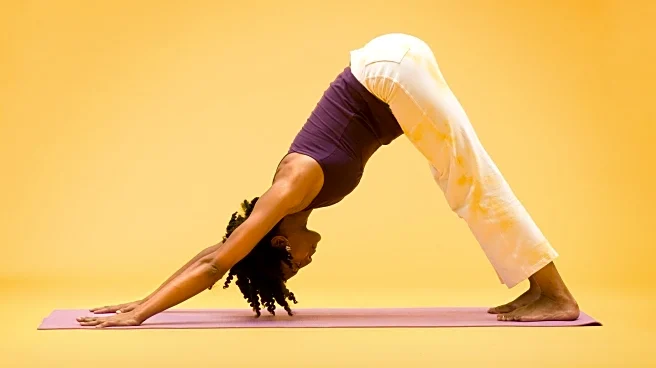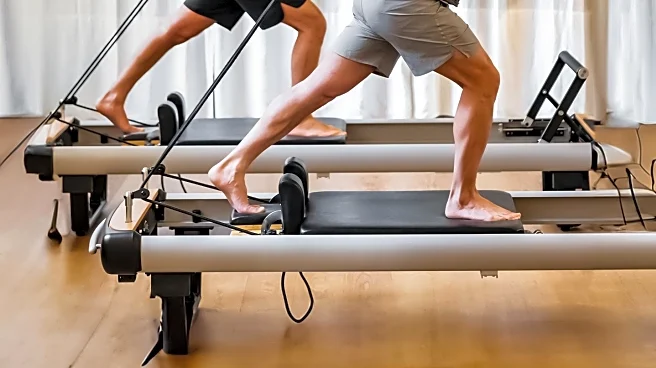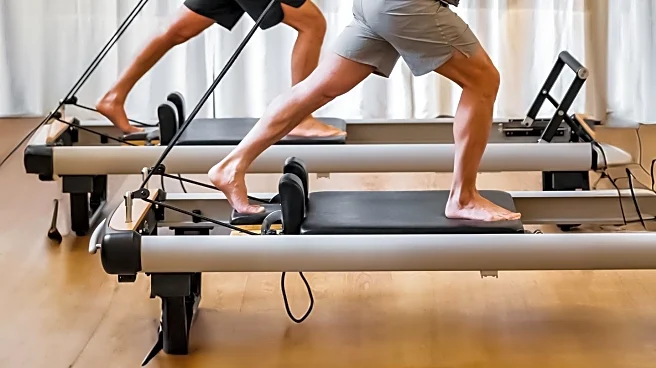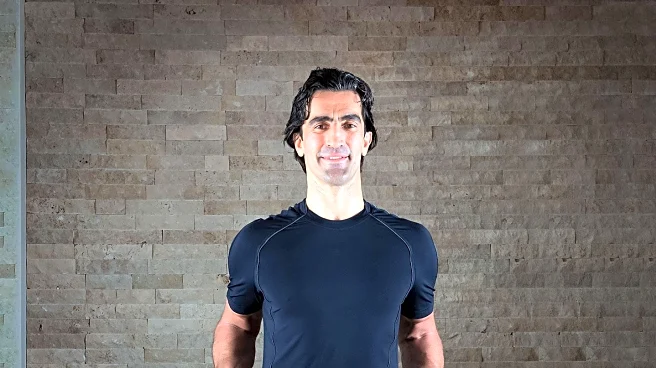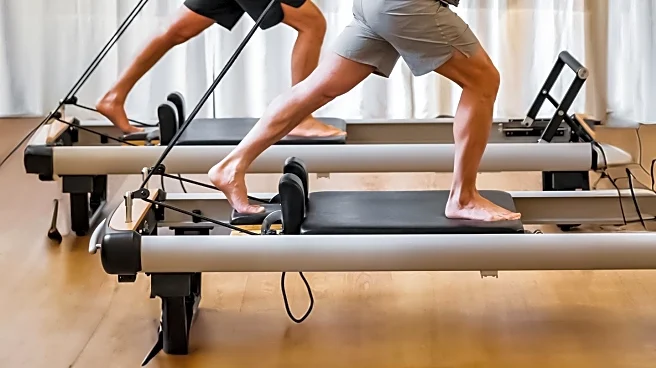What is the story about?
What's Happening?
Downward-facing dog, a staple pose in vinyasa yoga classes, is recognized for its numerous benefits, including improving posture. Yoga expert Dr. Rebekah Jade Lawrence explains that this asana helps counteract the effects of prolonged sitting and carrying heavy bags by decompressing the spine and enhancing flexibility in the body's posterior chain. The pose is particularly effective in combating spinal compression, which can lead to a temporary decrease in height due to gravity and daily activities. Posturologist Francisco Moreno notes that while stretching does not increase bone growth, it can improve posture and influence the perception of height by alleviating spinal compression. Yoga teacher Cristina Merino emphasizes that downward dog stretches the back, opens the chest, and enhances hamstring flexibility, contributing to a more stable walking posture.
Why It's Important?
The significance of downward dog extends beyond yoga classes, offering potential health benefits such as improved blood circulation and digestion. Regular practice of this pose can be integrated into daily routines, providing a simple yet effective way to enhance physical wellbeing. By promoting better posture, downward dog can help mitigate the negative effects of modern lifestyles characterized by prolonged periods of sitting and screen time. This poses a broader impact on public health, as improved posture can lead to reduced back pain and enhanced mobility, contributing to overall quality of life. Yoga instructors like Kathi Rüd advocate for the activation of arms during the pose to further strengthen and align the shoulders, triceps, and forearms, highlighting its comprehensive benefits.
What's Next?
Yoga practitioners and enthusiasts are encouraged to incorporate downward dog into their daily routines, even outside of formal yoga classes. Short breaks throughout the day can include this pose to counteract spinal compression and improve posture. The practice can be enhanced by gentle pedaling of the legs for an additional stretch, as suggested by Cristina Merino. As awareness of the pose's benefits grows, it may lead to increased adoption in wellness programs and physical therapy regimens, emphasizing its role in promoting holistic health.
Beyond the Headlines
The cultural and lifestyle implications of integrating yoga poses like downward dog into daily routines reflect a growing trend towards mindfulness and self-care. As individuals seek ways to counteract the physical demands of modern life, yoga offers a holistic approach to health that combines physical, mental, and emotional wellbeing. This shift towards incorporating wellness practices into everyday life may influence broader societal attitudes towards health and fitness, encouraging a more balanced and proactive approach to personal care.
AI Generated Content
Do you find this article useful?
